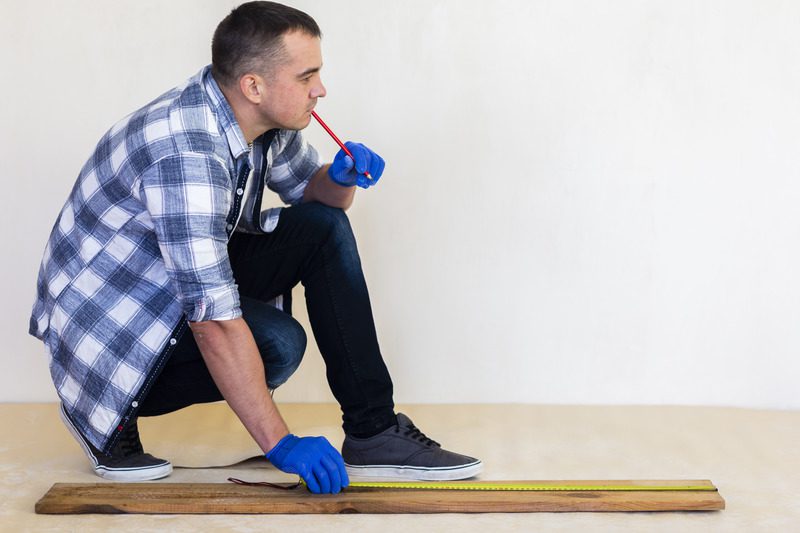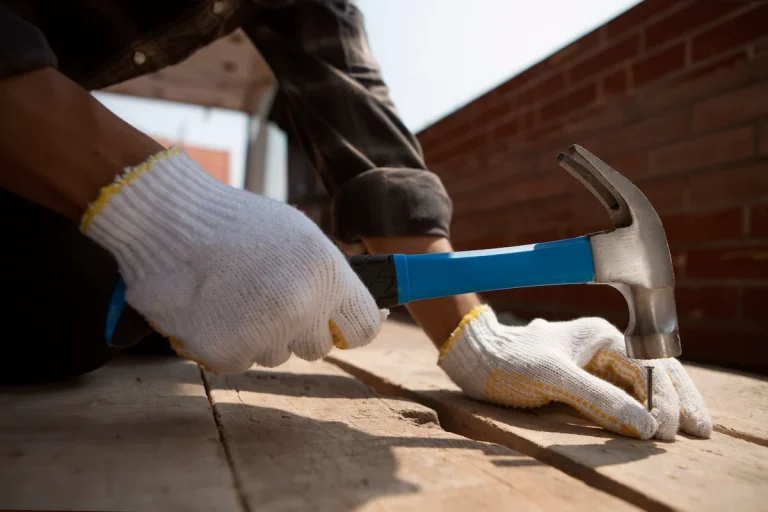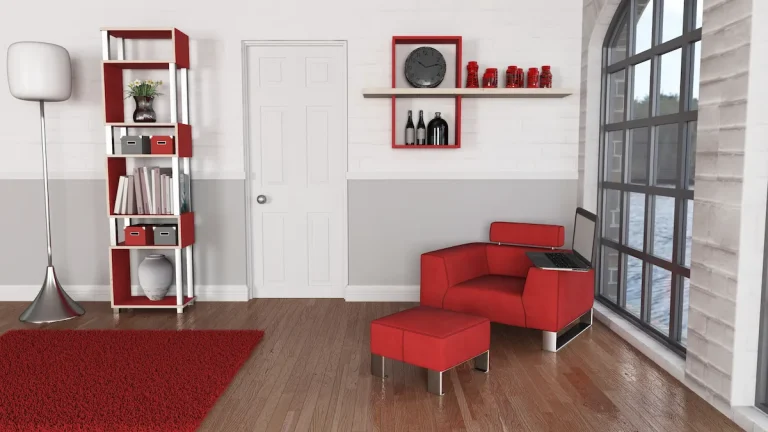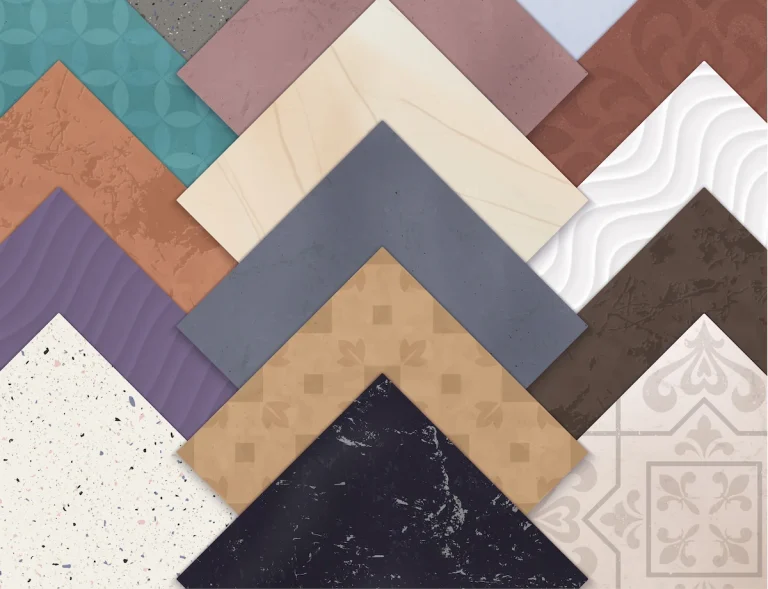Are you considering buying new flooring to elevate your office or office with the right flooring? Before you can have your new flooring installed, you may need to remove the old flooring. But what types of flooring require removal before installation, and how is this process done? And maybe you’re also curious, does flooring installation include removal?
In this article, we will explore the importance of removing old flooring before installing new flooring, the benefits of doing so, the risks of not removing old flooring, the cost of flooring removal, and whether it’s possible to install new flooring over old flooring. So, let’s dive in and find out everything you need to know about flooring installation and removal!
Does Flooring Installation Include Removal?
The question does flooring installation include removal is a common one among property owners embarking on a renovation project. According to insights from industry experts, the inclusion of removal services in flooring installation varies based on multiple factors and preferences.
So, do flooring installers remove old flooring all the time? One of the key factors influencing the inclusion of removal in flooring installation is the type of existing flooring.
For instance, if the property has old carpet or tile flooring that needs to be removed before installing new hardwood or laminate flooring, then removal would be a necessary part of the process.
The condition of the subfloor also plays a crucial role. If the subfloor requires repair or preparation before the new flooring can be installed, removal might be necessary.
Can You Install New Flooring Over Old Flooring?
The practice of installing new flooring over existing materials presents both advantages and drawbacks, as elucidated by industry insights.
Assessing the pros and cons of this approach is essential for property owners seeking to make informed decisions regarding flooring renovations and installations.
One of the key advantages of installing new flooring over existing materials is the potential cost savings. By avoiding the need for complete removal of the old flooring, property owners can reduce labour and material costs.
This approach can save time and minimise disruption during the renovation process. It’s important to consider the potential drawbacks, such as height variations and the impact on door clearances, especially in older homes with multiple flooring layers.
Proper evaluation and preparation are crucial to ensure the new flooring adheres securely and achieves the desired longevity.
Types of Flooring Need to be Removed Before Installation
The question does flooring installation include removal certainly cannot be separated from the discussion around what types of flooring need to be removed before installation. Each of these flooring types presents unique complexities that should be carefully considered when contemplating new installations.
- Vinyl flooring requires a smooth and level subfloor for proper installation, often necessitating the removal of existing flooring to achieve the necessary surface condition.
- Carpet cushioning and underlay may not be compatible with new flooring installation, often requiring complete removal.
- Ceramic tile’s rigid nature demands a solid foundation, which frequently requires the removal of existing materials.
- Laminate flooring, known for its floating installation method, typically requires removal of the existing floor to prevent issues with height differentials and subfloor imperfections.
The Benefits of Removing Old Flooring
The removal of old flooring offers several compelling benefits. These advantages underscore the value of prioritising removal as a precursor to new flooring installations.
a. Enhances the appearance of the space
The removal of old flooring contributes to a significant improvement in the aesthetics of the space, enabling a fresh canvas for subsequent flooring installations to enhance the visual appeal and ambience of residential and commercial areas. Emphasising aesthetics as a primary benefit reinforces the importance of removal in achieving transformative outcomes.
When old and worn-out flooring is eliminated, it creates an opportunity to revitalise the entire space. By upgrading the flooring, the room or area can be instantly transformed, instantly lifting the overall aesthetic.
The removal process clears the way for new design choices, allowing for a refreshed foundation for further enhancements. This not only improves the visual allure but also uplifts the overall mood and atmosphere of the space.
b. Increases Property Value
The removal of old flooring leads to a tangible increase in property value, as it signifies a commitment to quality and aesthetics, enhancing the appeal and desirability of residential and commercial properties.
Positioning removal as a value-adding investment underscores its significance in the context of flooring installations and property enhancements.
By replacing outdated or worn flooring, property owners can instantly revitalise the visual appeal of their spaces, creating a more welcoming and attractive environment for residents, visitors, or potential buyers. This investment in modern flooring solutions extends beyond mere aesthetics, as it also communicates dedication to maintenance and improvement, which are key factors in influencing property value.
Updated flooring can enhance the functionality and practicality of spaces, aligning with current lifestyle trends and preferences. From hardwood to luxury vinyl, the options for contemporary flooring solutions offer durability, style, and ease of maintenance – all aspects that significantly contribute to the overall appeal and value of a property.
c. Removes Potential Health Risks
The removal of old flooring serves as a proactive measure in eliminating potential health hazards associated with deteriorating materials, such as mould, mildew, and allergens, thereby fostering a healthier indoor environment for occupants.
This proactive step not only mitigates the risks of respiratory issues and allergies but also promotes better air quality within the living spaces.
The presence of a deteriorating floor can contribute to the accumulation of dust and other particulate matter, impacting the overall well-being of individuals within the space.
By prioritising the removal of old flooring, homeowners can ensure a cleaner, safer, and more hygienic environment, aligning with the overarching goal of maintaining a healthy indoor setting.
The Dangers of Not Removing Old Flooring
The decision to forgo the removal of old flooring entails inherent risks. Understanding these risks is pivotal in making informed choices regarding removal practices. Here are the risk:
a. Uneven Surface for New Flooring
The decision to retain old flooring risks leading to an uneven surface for new flooring installations, compromising the aesthetics and functionality of the space.
When old flooring is kept in place, there is a high likelihood of inconsistencies and imperfections emerging on the surface. This can make it challenging to achieve the desired smoothness and levelness required for installing new flooring material. An uneven surface not only affects the visual appeal of the space, but it can also pose potential hazards such as tripping and uneven wear on the new flooring.
b. Trapping of Moisture and Mold Growth
The decision to forego the removal of old flooring increases the risk of trapping moisture and fostering mould growth, posing significant health and structural concerns in residential and commercial settings.
Moisture entrapment beneath old flooring can lead to various issues, including mould proliferation, which can compromise indoor air quality and pose health risks. The presence of mould spores in the air can trigger respiratory problems and allergies, especially in individuals with pre-existing conditions. Prolonged mould exposure can lead to structural deterioration, weakening the integrity of the building. This not only affects the safety of the occupants but also results in costly repairs. Therefore, prioritising the removal of old flooring is essential in preventing these potential hazards and maintaining a healthy indoor environment.
c. Reduced lifespan of new flooring
Opting not to remove old flooring may result in a decreased lifespan and compromised performance for new flooring. This can undermine the long-term durability and functionality of the installed materials.
The decision to retain old flooring can have far-reaching consequences that go beyond mere aesthetics. Plus the visual impact, the durability and functionality of the new installation are at stake.
A sturdy foundation is crucial for any flooring project. Failing to remove the old flooring can jeopardise the overall integrity, leading to issues such as uneven surfaces, creaking noises, and diminished load-bearing capacity. This ultimately affects the long-term quality of the installation.
Flooring Removal Cost
When talking about does flooring installation include removal, some people also consider the cost factor.
The cost of flooring removal varies based on multiple factors, including the type and quantity of flooring materials, the presence of underlying underlay, and the utilisation of professional services. Leveraging insights from industry standards helps in understanding the comprehensive cost considerations associated with removal for well-considered choices.
One of the key factors that influences removal costs is the type of flooring material involved. This can include hardwood, laminate, tile, carpet, or vinyl. Each material requires different removal techniques and may have varying disposal costs.
The quantity of flooring to be removed plays a significant role in determining the overall cost. Larger areas or multiple rooms may require more time and labour, impacting the pricing.
The presence of underlying underlay can also affect the removal process and cost. Older underlay materials or challenging subfloor conditions may result in higher removal expenses, especially if extensive preparation is needed.
Opting for professional removal services can enhance the efficiency and quality of the process. However, it also adds to the overall cost due to labour and expertise. Professional services bring added value through proper handling and disposal, as well as potential savings in the long run.
From the explanation above, of course you already know the answer to does flooring installation include removal or not?
In conclusion, whether or not floor installation is considered removal depends on a number of factors, one of which is the type of flooring.
If you find difficulties in installing flooring, use the trusted carpet and flooring fitting services of TEKA Flooring.
TEKA Flooring‘s expert team is here to provide all your flooring needs, whether for residential, commercial, or specialised projects such as hospital-grade flooring installation. Call us today to get a FREE quote on 01733 731 930.
Read also:

































